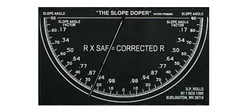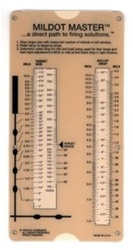I always want 3-5 ways to skin the cat. While gizmos and techy stuff make life easy, I want to know how the tecky program was written. If I can duplicate it with the math, that is all I need to do. I don't plan on taking an abacus and slide rule into the field. If I can prove the tecky gizmo to be good, I take the tecky gizmo into the field. Some programs round MOA, some round MILs, some round distance and some angles. By the time everything is converted from yards to Mils to degrees ..., things can get skewed. When I do the math, I carry decimal points out as far as the calculator will allow. For me ONLY the final answer is rounded. This way I know if the tecky gizmo is rounding at the end or all the way thru the process. Kind of like tolerance stacking. If all the parts are "in tolerance" but yet things don't work right. Then maybe all the parts were at their max tolerance and the final product is shitty.
I can do the math.
I do not do the math.
I take my rifle and I shoot it.
I shoot it over a chronograph.
I enter data into my laser range finder that gives me theoretical DOPE, including if that shot is at an angle.
I take my rifle and I shoot it.
I write shit down.
I compare that to a few other ballistics solvers, including the info from my Kestrel.
I take my rifle and I shoot it some more and I write that shit down.
I figure out wind and I write that shit down.
I take my rifle and I shoot my rifle at various things in various conditions...I really like killing innocent rocks.
I write that shit down.
I take all this written down information and I study it.
I decide what part of that written down information is actually useful/meaningful and condense it.
I make a pretty good chart with a font large enough for old man eyes but keep it 3x5ish.
I laminate that shit.
I clear tape that shit to my stock.
In my current AO and the shooting situations I find myself in, (my own acres mainly) that is plenty good.
When I lived Idaho or Alaska, I'd have to consider where I was, elevation, temperature...density altitude. I kept 4-5 charts.
But...even moderately priced modern laser range finders will give you suitable DOPE, especially if you take the time to make sure you are not putting garbage in so that you are not getting garbage out.



